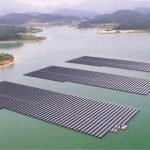The new ironing roll winder that supports markets for larger diameter master rolls up to 1.2 meters (4 feet) in diameter on cast film lines up to 6 meters (20 feet) wide.
November 8, 2017

The technology can be used for many film types, but Davis-Standard has found it to be most beneficial for CPP and barrier films where post wrap shrinkage occurs as a result of the types of polymers used in the film structures, or where blocking can occur due to a soft sealant layer with a high coefficient of friction (COF).
The winder incorporates programmable tension control, pre-spreading onto the winding roll, and servo-controlled web entry of the film to influence leveling or lay-flat of the film prior to the lay-on roll. Roll hardness is improved with a more precise loading force of the lay-on roll against the winding roll, controlling the in-wound air at higher production speeds than previously possible.
When optimized, these features can reduce defects such as tin-canning, caused by blocking and entrapped air, and resulting in annular raised bands on the roll face. Other defects such as buckling, telescoping, and starring can also be reduced with the control features and dynamics of the new winding system.
Larger diameter master rolls significantly improve subsequent processing efficiency. A relatively small increase in diameter can significantly increase the film length on a roll. This reduces downtime in slitter re-winding as well as batch process like vacuum metallization.




